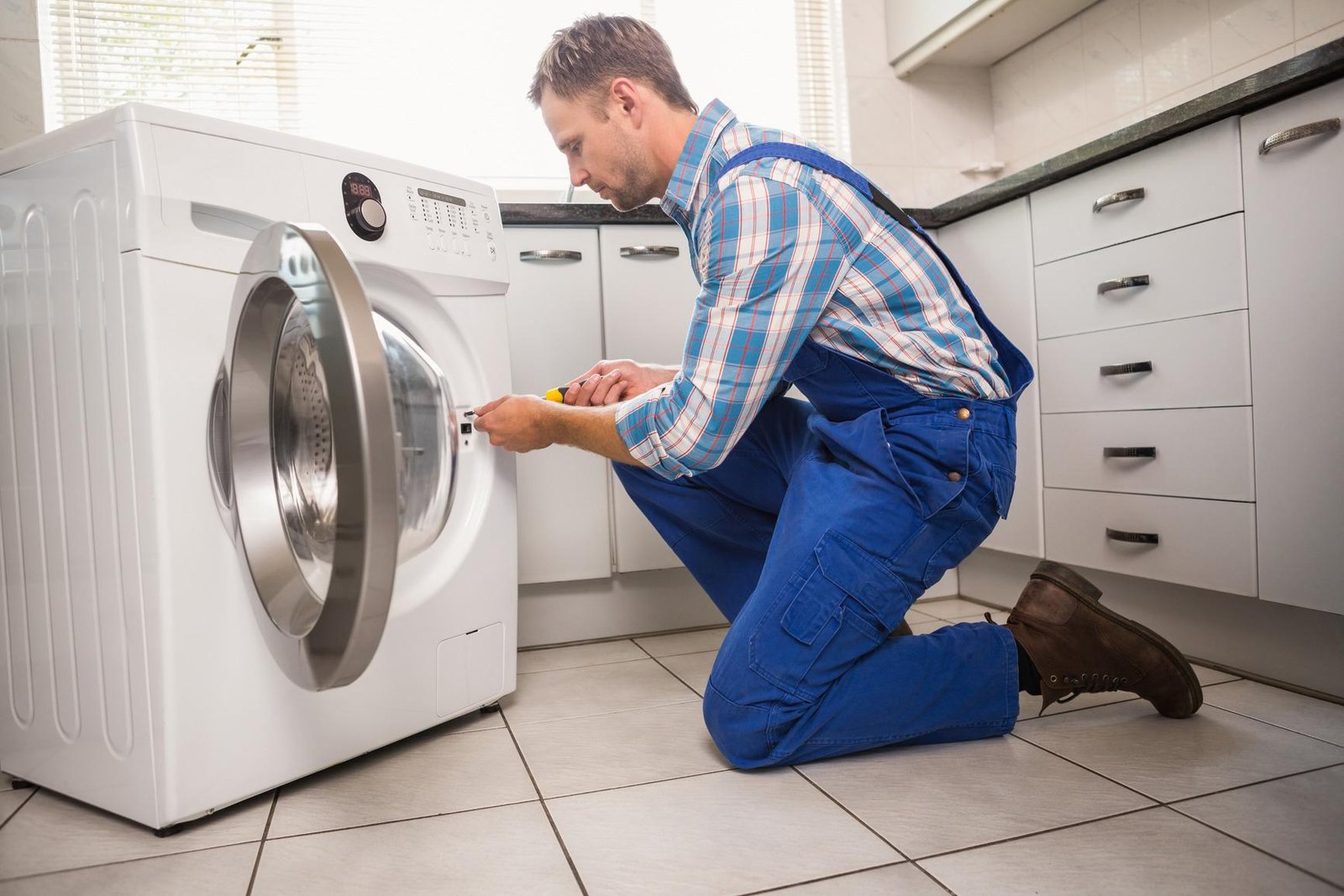Ever surprise why your garments pop out of the wash feeling like they have got taken a dip in the pool as opposed to just a spin inside the washing machine? You’re now not on my own. From selecting the incorrect cycle to going through the ones pesky drainage issues, there’s a handful of motives why your laundry won’t be getting the dry spin it deserves. But don’t worry, the specialists at Washing machine repair Services in Dubai have visible all of it. They’re right here to stroll you through a number of the most not unusual culprits in the back of soggy clothes and percentage their top troubleshooting guidelines. Whether it is satisfactory-tuning your cycle settings, untangling drain hose dilemmas, balancing your laundry masses, or while unsure, calling within the pros for a renovation check, we’ve got got the insights to get your washing machine again on course.
KEY TAKEAWAYS
- There are 4 things you could check very without difficulty that just would possibly alleviate the trouble.
- Watch our video to look in case you’re doing any of these items which can result in your washer leaving your garments too wet.
- Schedule a washing machine repair Services Technician to visit your own home and attach your washing machine when you’re unable to locate and fix the motive of a problem for your very own.
Find out the top reasons of a showering machine leaving laundry too wet.
Does your washing machine depart your garments soaking moist? If you’re pulling out soggy loads of laundry that take a couple of dryer cycle to clearly dry, there can be something wrong along with your system.
There are 4 things you could check very without difficulty that simply might alleviate the problem. Watch our video to peer in case you’re doing any of these items that can lead to your washer leaving your garments too wet.
1. Wrong Cycle
Look at the default spin velocity at the cycle that you select. You may additionally need to exchange to a extraordinary cycle or trade the spin velocity so the washing machine can spin water out of the load better.
For example, a lot of us wash nearly each load on the Speed Wash or Quick Cycle. The default spin pace for that cycle is commonly more-rapid. When you wash towels using that cycle, the washing machine often can’t balance and spin the heavy load at that pace so the manipulate shuts down the spin cycle or spins the towels at a lower velocity than wanted. You can repair the trouble with the aid of manually selecting a slower spin velocity whilst washing towels at the Speed Wash or Quick Cycle.
When you wash masses the usage of a Bulky, Delicate or Hand Wash cycle, the spin pace often defaults to a sluggish spin velocity. Manually growth spin velocity or change cycles to scrub the weight and pin garments out well.
Check your proprietor’s manual for extra recommendation and spin pace specs to your washer model.
2. Kinked or Restricted Drain Hose
With the washer shut off, test for a kink inside the drain hose. Reposition the drain hose if it is kinked so drain water will waft freely to the washer drain.
It the drain hose is not kinked, comply with these troubleshooting steps to check the drain hose for a restriction:
- With the washing device nonetheless shut off, pull the drain hose out of the standpipe and check for a clog at the give up of the hose. Sometimes lint or particles can building up on this place and prevent draining.
- To take a look at for an inner drain hose clog whilst the washing machine tub nonetheless has water in it, lower the drain hose into a bucket near the ground and see if the water drains out of the bathtub the use of nothing more than gravity. If the bathtub is empty, reinstall the drain hose and fill the bathtub with water by means of beginning a cycle then pause the cycle. Pull the drain hose out of the standpipe and spot if water drains out the usage of nothing greater than gravity.
- If water flows freely out of the washer indicating the drain hose is apparent, then test your property drain for a clog. Pour water down the standpipe and spot if water backs up within the pipe. If it does, use a plumber’s snake to clean the clog from your own home drain pipe.
- If you didn’t see any water popping out of the drain hose throughout the gravity drain test, then try using a store vac to suck the clog and the water out of the washer. If that doesn’t work, you’ll want to bail a few water out of the washer and use a store vac to suck out the relaxation from the bathtub. Once you get the water out, unplug the washer, disconnect the drain hose from the again and test it for a clog. Clear out any lint or particles that find within the drain hose. You can usually clean a drain hose clog by taking it outdoor and strolling water swiftly through it using a garden hose.
If the drain hose is not clogged and the house drain is good, then a terrible drain pump or inner drain machine trouble will be stopping the washer from draining nicely and leaving the clothes wet.
Schedule a washer restore Technician to go to your house and attach your washer whilst you’re unable to discover the motive of a drain problem.
3. Load Size
An overloaded or underloaded washer can grow to be unbalanced and spin at a discounted velocity. Add, take away or redistribute items and begin a drain and spin cycle.
When you need to wash only a few objects, you’ll usually want to add a towel or other more gadgets so the washing machine can stability the load in the course of the spin cycle.
Consult your owner’s guide for steerage on most advocated load sizes.
Here’s a few extra recommendation for loading your washing machine.
Front-Load Washer
Although you’ll see ever-growing capability advertised for front-load washers, don’t be tempted to stuff too many clothes into the washing machine at one time. Large capacity the front-load washing machines can easy particularly massive loads in positive situations. You can honestly wash plenty of lighter gadgets inclusive of shirts, blouses and underwear in a huge ability the front-load washer. On the other hand, filling a front loader with too many heavy garments like denims or towels can motive issues.
Using moderation and common feel are key to handling proper load length in a front-load washer. When washing towels, loosely load them till the stack within the tub reaches almost to the pinnacle of the door beginning. That tactic will depart room for the towels to tumble properly. Mixing heavy gadgets with lighter ones will also assist the washing machine tumble, balance and spin the weight more successfully.
Don’t be tempted to scrub a heavy, king-length comforter to your the front-load washing gadget. To avoid immoderate washing machine wear, take king-length comforters and other strangely heavy objects to the laundromat for laundry.
Top-Load Washing Machine
To properly load a top-load washing machine, gently place laundry evenly around the agitator or impeller. Overloading one side can cause the machine to become unbalanced. When this happens, the washer may stop mid-cycle, leaving clothes wet. In extreme cases, an unbalanced load can cause strong vibrations that may shift the machine, leading to costly repairs.
Leave a minimum of 6 inches from the top of the basket when loading light items. For oversized items like king-size comforters, consider using a laundromat to avoid overloading the washer.
Properly loading your front-load or top-load washer helps ensure effective drainage and spinning, allowing clothes to dry efficiently. It also saves time and tear for your washer so it lasts longer.
4. Extension Cord
Extension cords can cause pressure motor overheating and gadget shutdowns with the purpose of keeping your laundry moist. Follow the instructions within the proprietor’s manual or installation guide to well set up your washer.
Prevent Wet Laundry with the aid of Having Your Washer Professionally Cleaned & Maintained
Have your washing device professionally wiped clean and maintained so it drains and spins water out of the garments well. “During the washer repair and maintenance service, the technician will perform several key tasks. These tasks ensure the drain and spin cycles operate effectively:
- Test the washing machine drain device. The technician will test the drain pump operation and the whole drain direction via your own home’s drain gadget. The tech can clear obstructions and assist you to know if your house drain wishes to be cleared.
- Check the suspension device and spin cycle operation. Excessive vibration or banging during the spin cycle often causes clothes to remain too wet when the cycle ends. Banging during the spin cycle may result from an unbalanced load or tub suspension issues. The technician will check the spin cycle. They will ensure that the suspension components, like the shock absorbers and springs, are intact and functioning properly. They will also check the washing machine’s leveling and stability. If necessary, the technician will adjust the leveling legs to minimize vibration during the spin cycle.
For a front-load washer, the technician will:
- Examine the washing machine door and test the door lock. Failure of the door lock or door transfer can save the washer from draining or spinning.
- Clear the drain pump filter out. Many front-load washers feature a large filter at the drain pump assembly. This filter catches items like coins and paper clips that fall from clothes into the drain. The technician will empty the drain pump filter so the washer drains properly.
- Examine the drive device. Some front-load washers use a drive motor, belt, and pulley to spin the basket. Other washing machine models use a direct-pressure machine to spin the basket. A direct-power washer features a rotor directly connected to the spin shaft. This rotor rotates around a stator that is attached to the back of the washer bath. When the pressure gadget fails, the spin basket doesn’t rotate or it does not rotate at the proper pace. The technician will test the force system for wear and recommend alternative of drive elements if essential.
- Check electronic control operation and wiring. It controls the drive motor and the drain pump. If the control board fails or the wiring disconnects from the managing board, the washer cannot drain or spin properly. The technician will test the wiring and make sure that the digital control operates properly to manipulate the washer.




